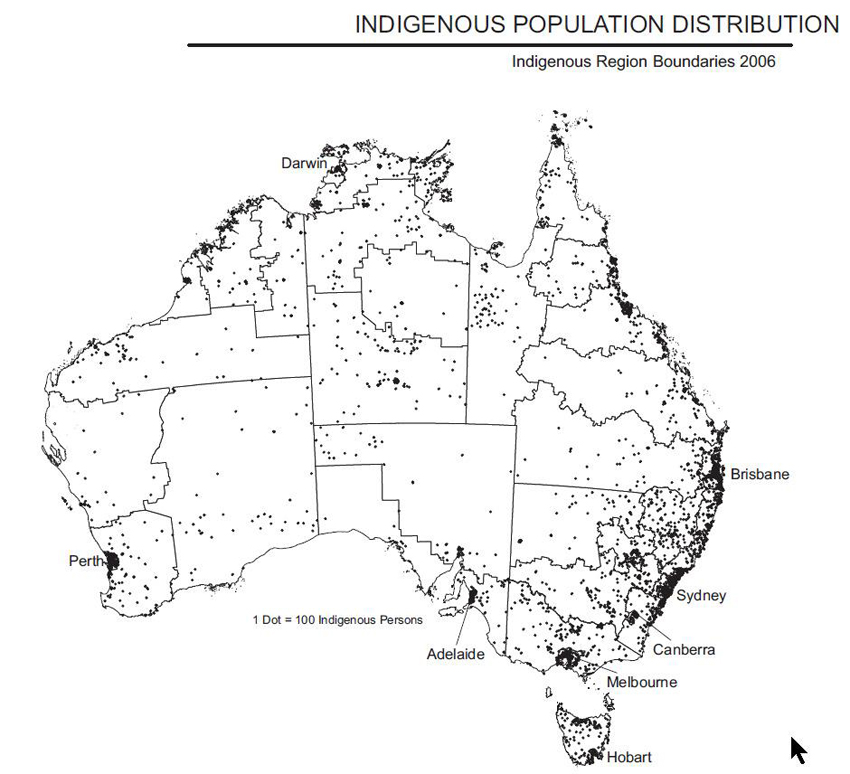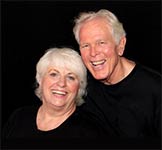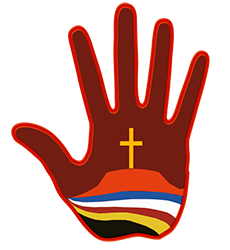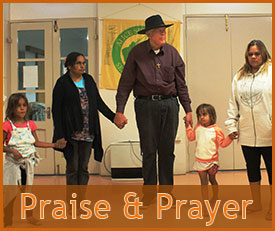Australian Indigenous People Today
As at 30 June 2006, 517,200 or 2.5% of the total Australian population reported themselves to be Indigenous. In terms of absolute numbers, New South Wales (148,200) and Queensland (146,400) had the largest Indigenous estimated resident populations followed by Western Australia (77,900) and the Northern Territory (66,600). One third of the total population in the Northern Territory is Indigenous. Among the Indigenous population, 94% were estimated as being of Aboriginal origin.

- In 2008, almost half (49%) of the Indigenous population was aged under 20 years and a further 16% were aged between 20 and 30 years.
- Less than half (45%) of Indigenous youth lived with their parents.
- Most Indigenous 15-24 year-olds (57%) had left school at year 10 or below in 1994 but by 2008 the proportion of Indigenous people who had completed Year 12 or equivalent increased to 20% in 2008.
- Among the Indigenous population, the unemployment rate was higher among youth (47%) %) than those aged 25 years and over (33%).
- One-quarter (25%) of Indigenous people aged 15 years and over were living in their homelands or traditional country in 2008.
- In 2008, an estimated 26,900, or 8% of Indigenous people aged 15 years and over reported that they had been removed from their natural family by welfare, the government or had been taken away to a mission
Australian Indigenous Communities
Australian indigenous communities include Aboriginal Communities in mainland Australian and Torres Strait Island communities (ATSI) in the waters between Northern Australia and Papua New Guinea, north of Queensland. The majority of communities with predominantly Aboriginal residents are in the Northern Territory.
Information about Australian Indigenous communities and Christian Communities is available from the Australian Bureau of Statistics (ABS)ivand the National Church Life Survey. (NCLS) The most recent ABS survey undertaken in the 2006 Nationwide Census came up with the startling facts about indigenous communities.
- 1216 communities of which 889 communities have less than 50 people. Concerning these small communities, 805 are considered very remote and 69 remote.
- Of the other 327 communities with more than 50 members, 288 communities have between 51-499 people and two thirds of these communities are very remote.
- Of the 39 communities with 500 or more people, 33 are also considered very remote.
- A snapshot of the disadvantage these very remote communities face includes the following: people dwell in the Northern Territory where the recent intervention has been in progress. 16049 dwell in Queensland and 12521 in Western Australia.
What is life like in the 1,030 very remote and remote communities?
- Only 95 Communities are connected to town supply and 663 rely on bore water of varying quality.
- 195 communities rely on pit toilets
- 239 communities have access to community organised rubbish collection.
- Electricity and water supply interruptions are a constant problem for a number of small communities.
- The majority of these communities can be cut off from hospitals or be multiple driving hours away when roads are open. Obtaining fresh and healthy food is both expensive and problematic.
- Forty-one percent of Indigenous youth felt that family violence was a common problem in households in their area.
- In 2008, just under half (47%) of Indigenous people aged 15 years and over lived in a household under financial stress where the household would be unable to raise $2,000 within a week in an emergency.




